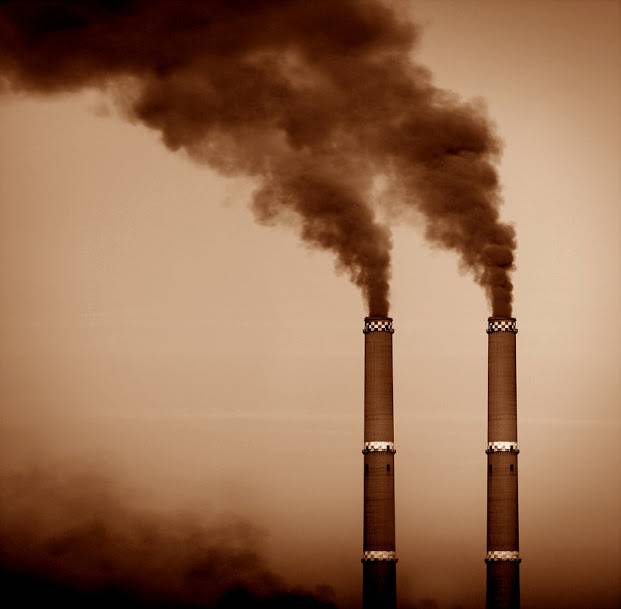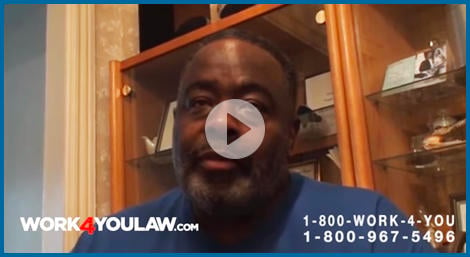Carbon Monoxide Poisoning

However, if a victim breathes in even a relatively small quantity of this gas (1.28 percent and over particle concentration levels) or has been exposed for a short period of time, it can prove deadly. Carbon monoxide is produced or released often as a by-product of the incomplete combustion or use of any type of fuel such as gas, oil, kerosene, wood or charcoal. If you have been diagnosed with carbon monoxide poisoning, it is important that you immediately contact an experienced New York personal injury attorney who can help protect your rights.
How Carbon Monoxide Poisoning Occurs
Carbon monoxide can come from any source that burns fuel. Some of the common sources are cars, fireplaces, powerboats, stoves, kerosene space heaters, charcoal grills, and gas appliances such as water heaters, ovens and dryers. Carbon monoxide may build up in a garage when cars, trucks or other vehicles are left running in enclosed spaces. The gas may build up and leak back into a dwelling.
Even sitting in an idling car in an open garage can be dangerous. Fuel-burning appliances that are improperly installed or used can also cause dangerous levels of carbon monoxide to build up inside houses and other buildings. Fuel-burning heating systems and appliances that are used during cold weather when doors and windows are closed may cause carbon monoxide gas to build up indoors as well.
Carbon Monoxide Deaths
According to New York City’s Department of Health and Mental Hygiene, nine people died citywide from 2010 to 2012 due to unintentional carbon monoxide poisoning not related to fires. Each year, about 500 people die in the United States as a result of carbon monoxide poisoning. According to the U.S. Centers for Disease Control and Prevention (CDC), fires are the most common cause of accidental carbon monoxide fatalities comprising 38.4 percent of the deaths in the calendar years 2001 to 2011.
Symptoms of CO Poisoning
CO poisoning is typically difficult to detect because the symptoms closely resemble that of the flu. Some of the signs and symptoms of carbon monoxide poisoning may include:
- Dull headache
- Weakness
- Dizziness
- Loss of consciousness
- Nausea or vomiting
- Breathing problems
- Confusion
- Blurred vision
Carbon monoxide poisoning can be especially dangerous for people who are sleeping or intoxicated. Victims may suffer irreversible brain damage or even be killed before anyone realizes there’s a problem. Some patients with severe CO poisoning symptoms may develop Parkinsonism, which is characterized by stiffness, slow movements and shaking. Some patients exposed to CO gas may suffer heart damage including coronary heart disease. The longer the exposure to CO gas, the greater the risk of heart damage. Women with severe CO gas poisoning may experience urinary incontinence or involuntary leakage of urine.
Treatment for CO Poisoning
Move away as soon as possible from the CO gas source and have a medical professional assess your symptoms. Patients will usually be given a dose of 100 percent oxygen through a mask. Patients suspected of having nerve damage will be given hyperbaric oxygen therapy, which floods the blood with pure oxygen, compensating for the oxygen depletion caused by CO poisoning. This type of treatment may be given to patients whose oxygen supply was reduced or cut off such as those in a coma, those who have suffered loss of consciousness or impaired brain activity, as well as pregnant women.
What to Do if You Suspect CO Poisoning Symptoms
If you experience carbon monoxide poisoning symptoms, there are several steps you can take:
- Get fresh air right away. Open doors and windows, turn off combustion appliances and leave the house.
- Get medical attention immediately. Go to the emergency room. Tell the doctor you suspect CO poisoning. It can often be diagnosed by a blood test done soon after the exposure.
- Tell the doctor about when and where the symptoms occurred, if anyone else in your household has been complaining of the symptoms, if you use fuel-burning appliances in the home, and if they have recently been repaired or inspected.
- If you live in a rental, make sure your landlord or property manager knows about the issue so the defective or malfunctioning appliances can be repaired or replaced right away.
Carbon Monoxide and New York Laws
On Feb. 22, 2010, a law went into effect in New York to help prevent CO poisoning deaths. Amanda’s Law was named in honor of Buffalo resident Amanda Hansen, a teenager who lost her life to carbon monoxide poisoning from a defective boiler when sleeping over at a friend’s house in January 2009. This law required that CO alarms be installed in all new and existing one- and two-family dwellings, multifamily dwellings and rentals that have any fuel-burning appliance, system or attached garage.
The National Fire Protection Association (NFPA) recommends that carbon monoxide alarms be installed in a central location outside each sleeping area and on every level of the home. CO alarms must comply with the UL 2034 or CSA 6.19 and be installed according to the manufacturer’s instructions.
These alarms should be replaced every five years in order to benefit from the latest technology and upgrades and because the sensors in the alarm unit can deteriorate over time. In addition to residences, hotels in New York City are also required to have carbon monoxide detectors in every room. The same also applies to nursing homes, hospitals, schools and universities.
Common Causes of CO Poisoning
Carbon monoxide is produced when fuels such as gas, oil, coal and wood don’t burn fully. These sources of fuel are widely used in many household appliances, which may all lead to CO poisoning including, but not limited to, boilers, fireplaces, central heating systems, water heaters, cookers, open fires, etc.
One of the main causes of accidental exposure to carbon monoxide is household appliances, especially cookers and space heaters, which are defective, have been damaged, incorrectly installed or poorly maintained. The risk of exposure to carbon monoxide from portable devices may also be higher in caravans, boats and mobile homes.
Other potential sources of CO poisoning include:
- Blocked flues and chimneys, which can stop CO gas from escaping, thereby allowing it to reach dangerously high levels.
- Burning fuel in an enclosed or unventilated space such as running a car engine, gas-powered generator or barbecue inside a garage, or a faulty boiler in an enclosed space.
- Defective or blocked car exhausts. A leak or blockage in an exhaust pipe may lead to carbon monoxide buildup.
- Paint fumes emanating from some cleaning fluids and paint removers contain methylene chloride, which may cause CO poisoning if inhaled.
Premises Liability in CO Poisoning Cases
Property owners and managers are legally required to take the steps necessary to prevent carbon monoxide poisoning. Standard safety precautions on the part of landlords and building owners include performing routine tests, installing and maintaining carbon monoxide detectors, complying with building codes and safety standards, especially when installing cooking equipment, boilers, etc., and making sure that the appliances are promptly repaired and periodically maintained.
If a tenant’s carbon monoxide exposure is caused by a property owner’s and/or manager’s failure to repair an appliance, furnace, pipe or other device in the premises, then the responsible parties may be held liable for the injuries and damages caused. If the property manager agreed through a lease agreement to repair a stove or other appliance in the tenant’s rental unit, but did so in a negligent manner causing the tenant to be exposed to harmful levels of carbon monoxide, the landlord and property manager can be held liable. The same is also true if a law or ordinance requires the property manager to inspect or repair devices that might expose the occupants of a dwelling to carbon monoxide gas and the property owner and/or manager fails to do so.
Carbon Monoxide Exposure on the Job
Exposure to carbon monoxide can also occur on the job. Workers die every year in the United States as a result of carbon monoxide exposure, especially in occupations where workers are using some type of fuel-burning equipment or tools in structures or spaces where there is lack of proper ventilation. The gas can emanate from sources such as compressors, power tools, space heaters and welding equipment. Some of the professions that are most at risk for CO exposure include welders, firefighters, long shore workers, diesel engine operators, marine terminal workers, forklift operators, etc.
If you have been exposed to carbon monoxide on the job, you may be eligible to receive workers’ compensation benefits from your employer. Injured workers and families may also be able to file a third-party claim for significant money damages against a party other than the employer. Such parties include, but are not limited to, general contractors, property managers, sub-contractors, property owners, manufacturers of defective products, etc.
Carbon Monoxide and Product Liability
When a defective product causes or contributes to carbon monoxide exposure, the manufacturers can be held liable for the injuries, damages and losses caused. For example, if a defective tool, appliance or furnace causes a carbon monoxide gas leak, then the manufacturer of the defective products can be held accountable. Product manufacturers are required to make items that are safe for consumers. When a defect is detected, product makers are legally obligated to inform the U.S. Consumer Product Safety Commission (CPSC) and issue a safety recall. In addition, product manufacturers can be held liable if they fail to warn of a product’s dangers or if they don’t provide consumers with proper instructions to use the product.
Damages in CO Poisoning Cases
There are a number of damages injured victims or families of deceased victims can seek in a carbon monoxide lawsuit whether they are suing a landlord, property manager or product manufacturer etc. Some of these damages include:
- Medical expenses
- Lost wages and benefits
- Cost of hospitalization
- Rehabilitation
- Permanent injury
- Disability
- Past and future pain and suffering
- Emotional distress
Carbon Monoxide Wrongful Death
A number of carbon monoxide exposure cases result in deaths. When an individual dies as a result of carbon monoxide poisoning, it is important to look into how or why the exposure occurred. If it happened as a result of someone else’s negligence, the family of the deceased victim can file what is known as a wrongful death lawsuit against the at-fault parties. Such claims are usually filed by family members or survivors of the decedent such as a spouse, children, parents, siblings or others who were financially dependent on the individual.
A wrongful death claim seeks compensation for damages such as lost future income, pain and suffering, medical expenses, funeral costs, etc. As in personal injury claims relating to carbon monoxide poisoning, a manufacturer, contractor, landlord, property manager, business or builder may be held accountable if their actions or negligence cause a carbon monoxide poisoning related death.
Compensation for Victims and Families
If you or a loved one has been injured due to someone else’s negligence or wrongdoing, the experienced New York personal injury attorneys at the Law Offices of Kenneth A. Wilhelm can help you better understand your legal rights and options. We recovered $985,000 out of a $1 million dollar insurance policy for two victims of smoke inhalation.
Please contact us TOLL FREE 24 hours a day, 7 days a week at 1-800-WORK-4-YOU (1-800-967-5496). WE CAN EVEN COME TO YOU. There is no attorneys’ fee unless we recover money for you. We can also help with personal injury cases in New Jersey, Connecticut, Pennsylvania, or Florida. If you have been seriously injured in any of the 50 U.S. states, please call us and we will try to help you with your case.
Other TOLL FREE phone numbers for us are:
1-800-RADIO-LAW, 1-888-WYPADEK, OR 1-800-LAS-LEYES
Please visit us at: www.WORK4YOULAW.com









